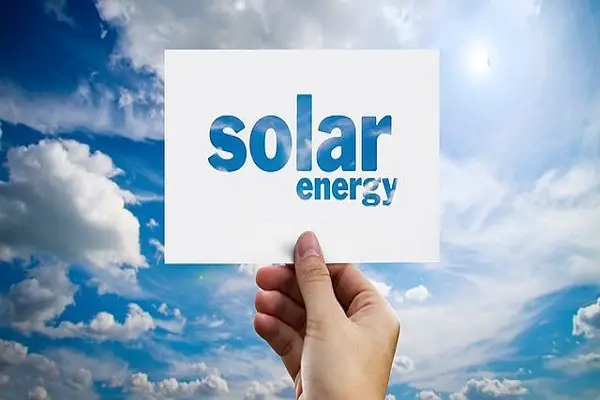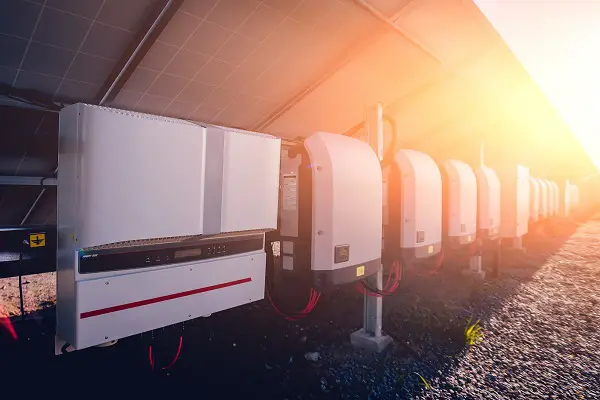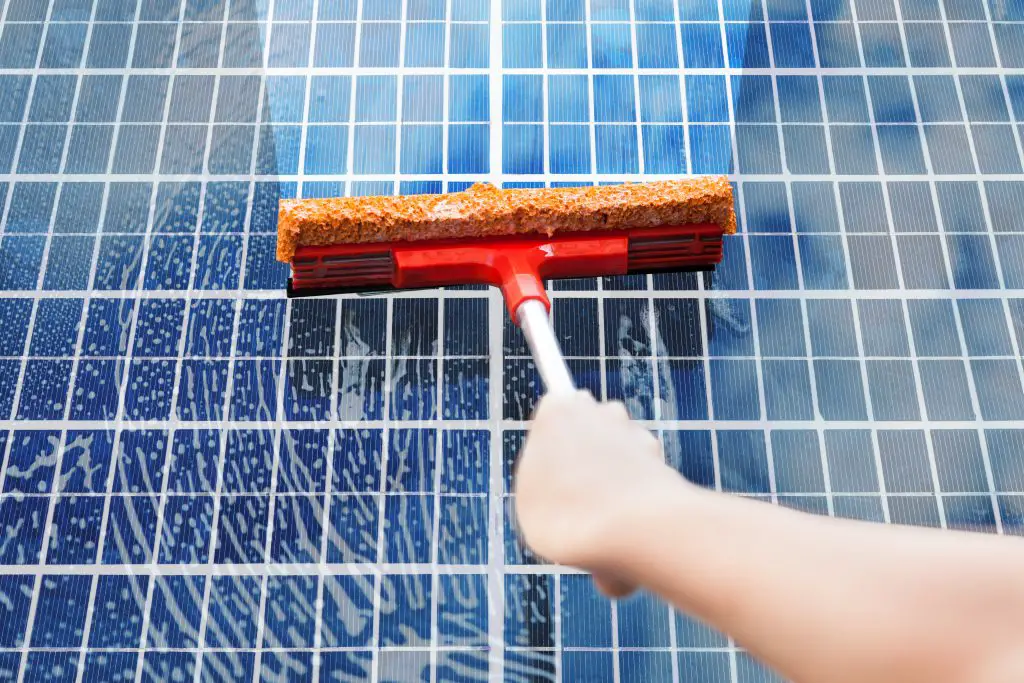16 Facts You Should Know About Solar Energy
Introduction
Since the beginning of time, humans have depended on sunlight for sustenance. By definition, ‘solar energy’ is a concept that includes solar panels, solar power, and photovoltaic cells.
Collectively, the term represents all forms of energy that we derive from the radiation of the sun.
The increase in the rate of consumption of nonrenewable resources such as coal, gas, and oil, is on the rise.
However, there is a great shift in the energy sector to renewable resources such as wind, solar, and geothermal energy.
Even though many countries have embraced renewable sources of energy, the industry is yet to achieve a milestone in the complete exploitation of the demand for energy.
But there are certain facts that will unravel the potential of the booming source of energy for the global energy needs.
Solar Energy In Perspective
Simply put, solar energy is the energy obtained from the sun. For several years, the sun has been the ultimate provider of energy for several billions of years.
Every life form benefits from sunlight. And it is more pleasant to know that it competes with the likes of fossil fuels to provide cheaper and renewable energy alternatives. In the home, solar energy technologies harness the power of the sun for:
- Production of hot water
- Heating in the home
- Lighting the home
Basically, solar energy does not produce pollutants, unlike its contemporaries.(1)
Consequently, it is a clean source of energy – eco-friendly nature. Apart from the ease of installation, it requires a low level of maintenance. Meanwhile, the main limitation of the source of energy is that it is not as efficient at nighttime because of the absence of sunlight which hinders the generation of energy.
More so, the generation of energy by the solar system depends on factors such as:
- Weather conditions
- Location of solar panels
- Time of day and year (season)
Therefore, there are two practical disadvantages of using solar technology – the cost of the equipment and the amount of sunlight reaching the panel.
Hence, the amount of sunlight available at a location differs based on clouds, season, time of day, location, and the geographical location. One of the world’s best areas for the supply of sunlight is the
Southwestern parts of the United States. Across the globe, some countries in developing nations are remarkably the areas exposed to high solar intensity namely – Latin America, Africa, and Asia.
To lower the cost of solar technology, it is important to improve the efficiency of the cell.
The Director of the DOE’s National Center for Photovoltaics, Larry Kazmerski, suggests that as more researchers and scientists at the Center try to pursue the efficiency of solar cells, there will come a time when the sun’s energy will be responsible for powering a significant part of the country’s energy demand.(2)
More so, space applications will benefit from the subsequent costs and improvements.
Facts About Solar Energy
Fact 1: Solar energy is a fast and reliable route
The distance of the sun from the Earth is about 90 million miles. Interestingly, it only takes less than 600 seconds for the sun rays to reach the core of the Earth.
With more precision, statistics show that light travels at a distance of about 499 seconds. Similarly, every hour during which solar energy hits the Earth’s surface is enough to power the entire population of the Earth throughout a whole year.
Basically, the Sun is a fusion reactor. In one minute, the energy provides so much energy that it could supply the energy needs of the world for a whole year.(3)
In 24 hours, the Sun provides excess energy than the current world population will consume in a further 27 years. A fun fact is that, over a three-day period, the amount of solar radiation that strikes the earth is equal to the energy which is present in fossil energy storage.
Fact 2: Solar energy is a clean source of energy
The power of the sun is a suitable renewable source of energy. Without any comparison to fossil fuels, solar energy cannot go into extinction.(4)
The sun is always on the horizon, come what may! More so, it doesn’t produce atmospheric pollutants while it goes it to heat and cool homes and power appliances, car, and a host of gadgets.
In addition, the source is also free and inexhaustible. Every year presents new development for the industry. The first discovery was the ability to generate heat with solar power.
Horace de Saussure, a Swiss Scientist in 1767, constructed the first thermal solar collector – this collector was used to cook food and heat water.
The year 1891 was registered in the United States as the period during which the solar water heater was patented for commercial purposes. Two California executives bought the system for installation in about one-third of the Pasadena homes before the year 1897.
Fact 3 – The world leader in the production of renewable energy is China
The second and third leaders are the United States and Japan. Other forms of renewable energy include biomass, wind for energy production, freshwater, and oxygen.
The second discovery was the production of electricity from solar energy. Edmund Becquerel, a French physicist in 1839, understood that the energy from the sun was capable of producing a photovoltaic effect.
In the early ‘80s, the conversion of light into electricity was made possible with selenium photovoltaic cells with about 2% efficiency.
Although the method of conversion was not well-understood, it piqued curiosity in many people as it couldn’t successfully convert sunlight into electricity.
But when Albert Einstein made a proposal about the ‘photoelectric effect’, some years later, people had a better understanding of the mechanism of the photovoltaic systems.(5)
Fact 4 – Solar cells were first introduced in 1956
For several decades, photovoltaic production has dominated the world even before we knew it. Presently, there are some space programs that have been pioneered to unleash photovoltaic powered systems for both communication satellites and spacecraft.
In 1908, the design of solar technology took a new turn. A certain William J. Bailey who worked with Carnegie Steel Company was responsible for this change.(6)
His invention of copper coils and an insulated box changed the solar facet. In the early ‘50s, the rate of efficiency of the systems had increased.
Bell Telephone Labs had about 4% efficiency and increased to about 11% when silicon PV cells were introduced. Since that day, solar power systems have become an intensive field.
But the late ‘50s presented an opportunity for the space programs to develop photovoltaics.(7) The rugged nature of the cells made them perfect sources for powering satellites.
Besides, they were also lightweight and could match the requirements of the low power of the system. A drawback was that the cells had not attained the height of practicality yet.
The high cost of making the cells lightweight and efficient made them unavailable. Thus, there was a need for more research.
Fact 5 – Solar energy garnered popularity in the year 1970
After fossil fuels became fragile, a consequence of the disastrous oil crisis in 1970, there was a need to consider other sources of energy. So, a few scientists came together and started seeking other options. After a short while, solar and wind became the most prominent sources of energy in many countries.
The availability and affordability of fossil fuels made a lot of people ignore the potentials of solar energy.
But the increase in energy demands and environmental concerns has greatly affected the exploration of the solar energy industry as an alternative source of energy.
During the 1973 – 1974 oil embargo, for example, the installation and testing of more than 3,000 PV systems took place in the United States under the supervision of the US Department of Energy.(8)
A few years later, government agencies and energy companies continued to invest in the PV industry. During the Gulf War in the 1990s, solar improvements had become an important piece of energy improvements.
Fact 6 – Solar panels are cost-effective
Since 1977, the cost of solar panels has dropped several times up to 100. Presently, their price is has been become two times cheaper than they were in the year 2008.
Fact 7 – Solar industry has the tendency to expand some more
In the United States, the total usage of solar energy is about 1% out of the whole demographics.(9) According to statistics, this percentage may increase to about 40% for every year in every decade.
Every year, the promise that comes with solar energy shows that the sector has the potential to become even better annually. Compared to five years ago, solar power systems are not cumbersome. Eventually, the goal is to provide efficient energy systems at minimal costs.
Fact 8 – Location
The production of solar electricity depends on the geographical location of the solar panels. For instance, the annual generation of energy by a solar system in a strategic location is facilitated with about 5.5 hours of daily supply of sunlight.
However, a region that is reputable for its cloudy weather has the potential to receive about 2.5 hours of sunlight every day of the year.
Fact 9 – Solar lights are not susceptible to blackouts
After the installation of solar systems, residents do not experience regular blackouts as with other sources of energy.
More so, the high cost of installation is the reason why many people hardly embrace the new route of energy generation. Fortunately, the wealth of research involved in the solar energy industry shows high prospects for the growth and affordability of the systems.
Fact 10 – Solar lights are immune to cloudy days
Worried about cloudy days? You should not worry much. If you can afford long-life batteries as extra boosters for the energy storage, you will have access to energy generation even when the weather is unfavorable. But the solar panels remain inactive during the night because of the lack of sunlight.
Most times, people relegate this fact as a con of the energy generation source. The fact that the solar panels are passive during the night may make it important to purchase extra batteries so that there is sufficient energy to fall back on during cloudy days.
Fact 11 – Solar energy generally promotes savings on electricity bills
Solar power was relatively expensive in the year 2011. Nevertheless, the year is remarkably popular for the massive savings on electricity (approximately $20,080) compared to the regular electricity costs of about 20 years. By calculation, an individual will have that amount of savings even after paying off the solar power system costs.
Fact 12 – Financially appealing and eco-friendly
The fact that the solar energy system is a green source of energy cannot be overemphasized. The environmentally-friendly nature of the solar energy systems is enough reason for the massive attention the industry gets these days.
Surprisingly, people who purchase solar systems are in it for the financial benefits. For this reason, solar institutions have circulated specific ads that reflect the financial benefits of solar systems.
Fact 13 – The amount of the energy of the sun that humans have harnessed so far is a ridiculous 0.01%
Practically, science tells us that the Earth’s atmosphere absorbs a meager 20% of the sun’s radiation or energy. Meanwhile, the Earth’s surface absorbs about 50% of that number. Also, about 30% of the sun’s radiation bounces off the surface of the Earth during reflection.
Nevertheless, a human will have about 8,000 times the total amount of energy consumes in the world if we could collect all the solar energy absorbed by the Earth.
Fact 14 – Solar energy is important in space missions
A few countries have harnessed the power of the Sun to render support for spaceships and space missions. From NASA’s archives, it shows that the exploration of the concept is of the essence to the exploration missions in deep space (10)
Fact 15 – Solar power is an incredible use of solar energy
The amazing fact about solar systems is the method of conversion of electricity either directly or indirectly. The direct method of converting electricity is the photovoltaic system while the indirect method is the concentrated type.
In the case of concentrated solar power, the beams of sunlight focus are directed with the aid of lenses or mirrors. Meanwhile, the photovoltaic solar power source involves the direct conversion of solar energy into electric energy.
Fact 16 – There is a wealth of time to explore the industry
The most brilliant and satisfying fact is that the Sun is ours till eternity. For generations to come, we can still enjoy the endless benefits of the heavenly body.
More so, there is plenty of time to conduct research. This is the most important fact that makes researchers and humans alike to pursue the concept of solar energy.
Conclusion
NASA astrophysics predicts that the Sun will not consume itself in another 6 to 7 billion years after which it becomes a white dwarf.
Therefore, it is quite gratifying to know that the Sun will always shine upon the Earth’s surface to meet the needs of the world. Most importantly, humans must learn to tap into the power of the Sun because it offers endless benefits.
Who knows? Another research may come up in two years to predict that the Sun may power humans too. Although we have come a long way there lies a longer journey ahead of time.
The environmentally safe nature coupled with the practicality of solar power systems has influenced many people across the world. Siemens Solar documents an increase in the production of PV cells and modules from 40 MW to 120 MW between the years 1990 and 1998.
Every year, the sales of the systems increase by 15%. There is every possibility that the market grows at a rate of 15% annually. By 2010, such calculations depict that the capacity of world production will be 1000 MW. Also, photovoltaics may become a $5 billion industry.
Based on these facts, the futuristic potentials of solar energy technology are brilliant and worth every penny for research.
P.S. If you find this post useful and interesting, please do not hesitate to share it.
If you have something to add- Leave a comment below!



